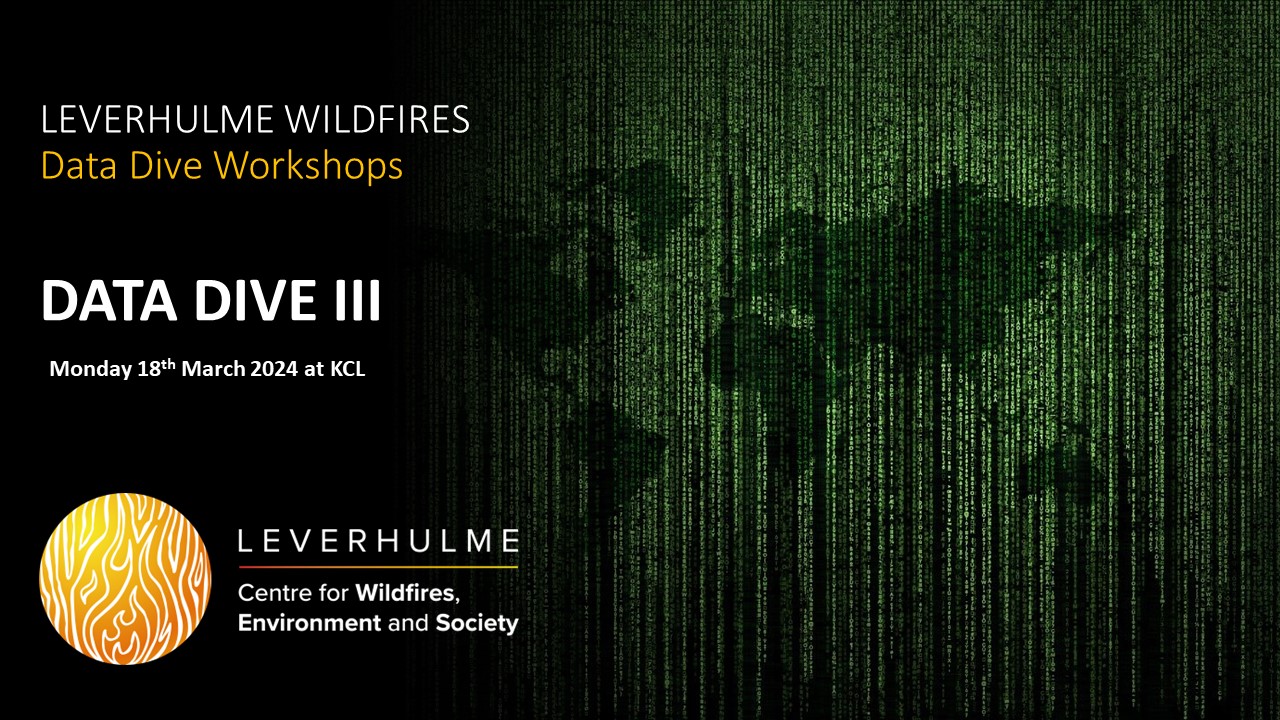Data Dive on Monday 15th Jan 2024, King’s College London
(internal event, affiliates welcome)
In the Autumn we held a ‘data dive’ event, where groups of us spent a day asking some initial questions of the Global Fire Use Survey dataset. On 15th Jan we then held a follow up event.
We are now holding our third Data Dive, on Monday 18th March from 10:00-16:30 in the Leverhulme Wildfires Boardroom at Melbourne House, King’s College London, with coffee and lunch provided. The event is in-person only. You do not need to have attended the first data or second dive to join us for this one, and you do not need to have quantitative research skills to attend – qualitative researchers have a lot of insight to bear on this dataset!
For this data dive we thought we’d focus the teams on questions that feed into papers we’re thinking about writing, with potential for you to contribute to the development and authorship of those papers. These are the three areas that the teams will explore:
Mini project 1: We want to develop a paper looking at the ethics of the Global Fire Use Survey research, and expert elicitation as a research methodology. One element of this paper will be discussing the reasons for agreement/disagreement between survey respondents. This team will look in detail at a few regions and look qualitatively at the coherence between responses and the kinds of participants associated with different kinds of responses.
Mini project 2: Matt Kasoar & Cathy Smith have developed a means of projecting the seasonality of smallholder fire globally (paper in submission). This method has now been integrated into the WHAM! global model of human fire use. Participants can explore these initial outputs, and how far they cohere with GFED5 & The global fire survey. This will feed into a paper describing WHAM v2, and/or a standalone analysis of global fire seasonality.
Mini project 3: One strength of the global fire use survey is its data around the distribution of governance systems. This can be supplemented with data from the DAFI and LIFE literature databases. We will aim to build a predictive model of this distribution using secondary variables such as potential evapotranspiration, market access, HDI, national calory balance, topography and burned area. This will inform development of WHAMv2 and associated papers. (FYI WHAM is Ol Perkin’s agent based model of anthropogenic fire impacts)
Could all those who plan to attend please fill out the attendance/catering form – please contact Cathy Smith C.Smith@rhul.ac.uk for this






